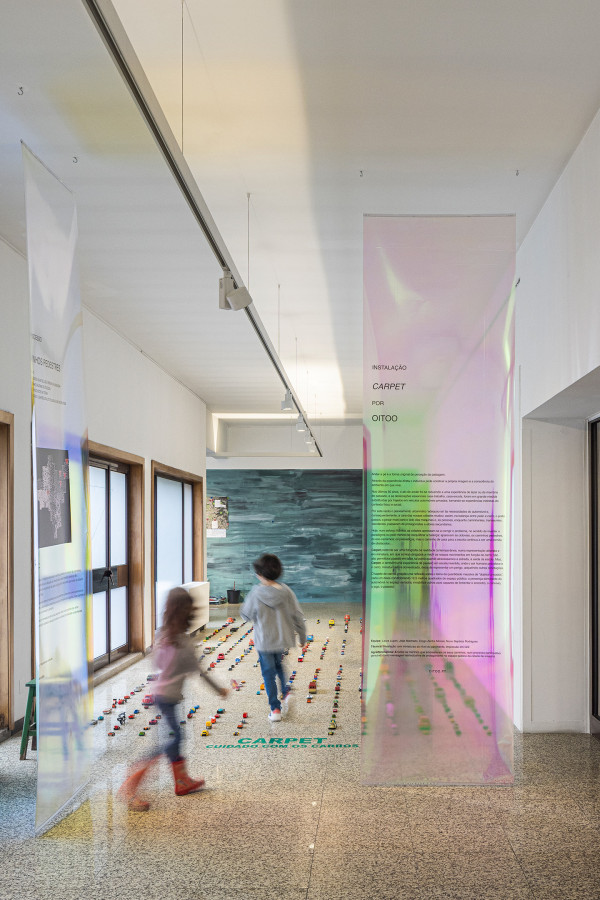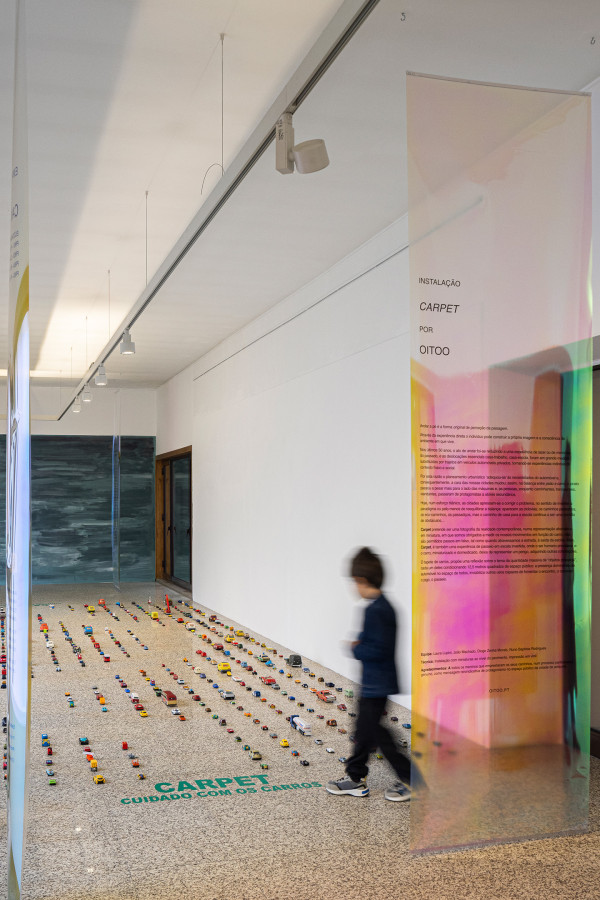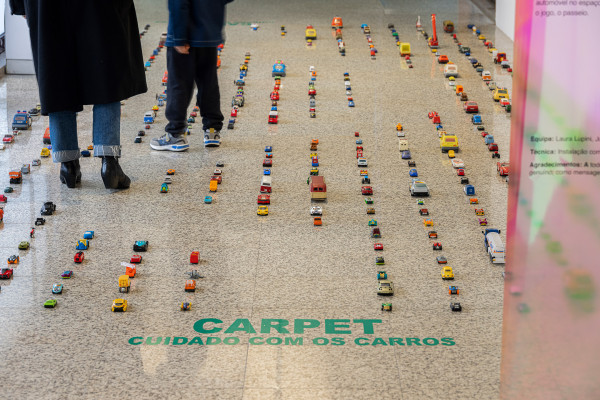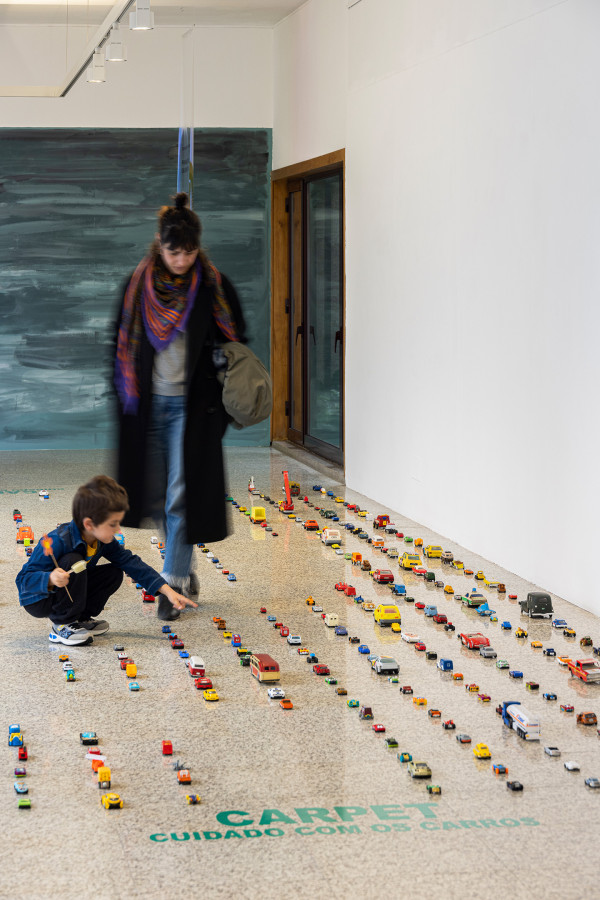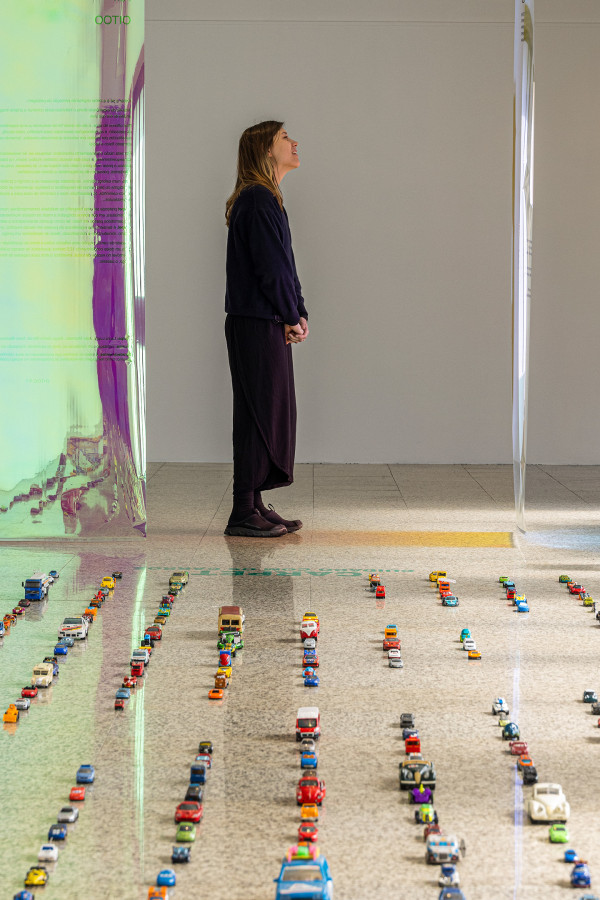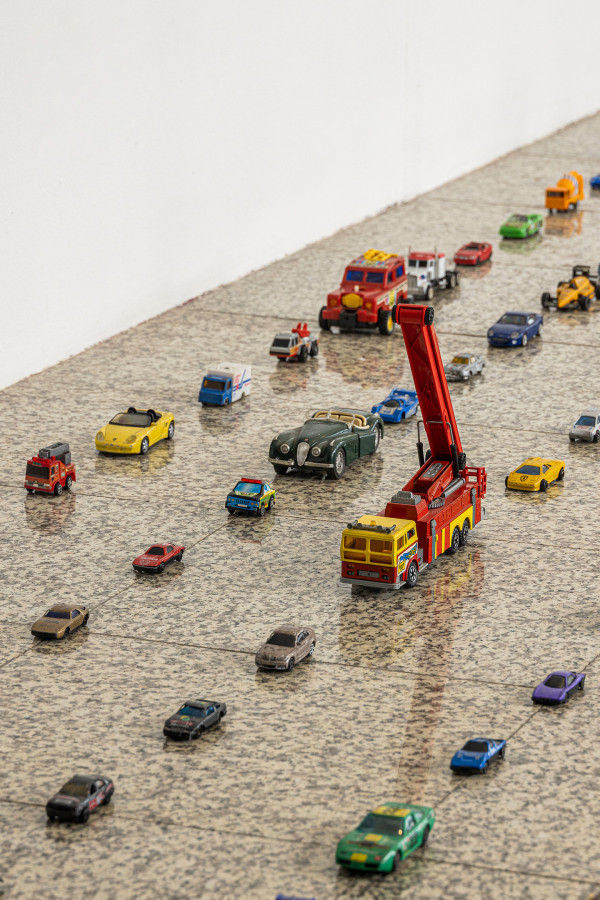carpet

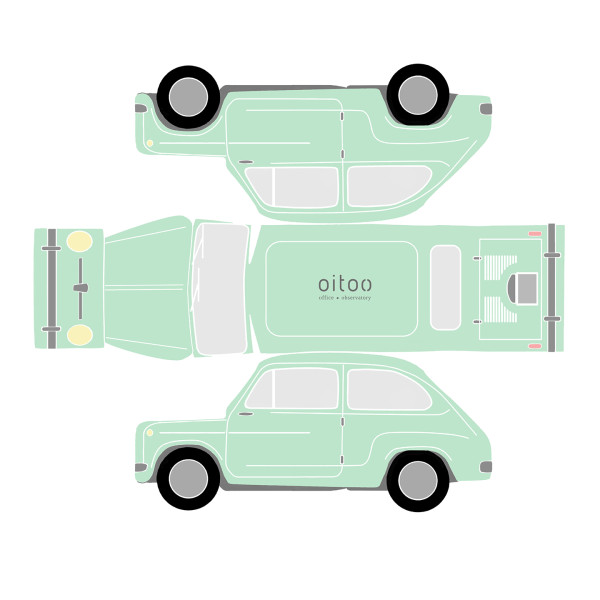
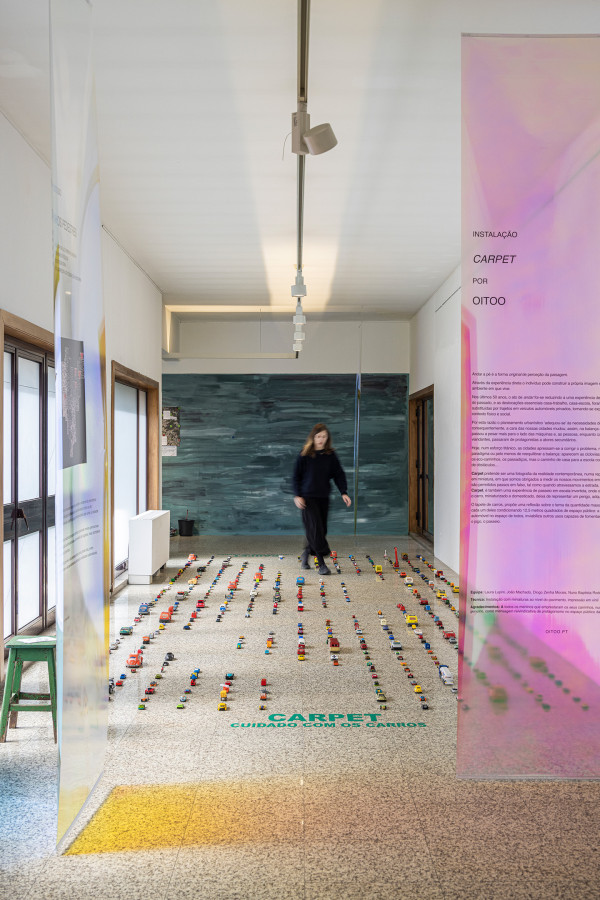



As a result, urban planning has adapted to the automobile, reshaping our cities. In the balance between pedestrians and cars, machines dominate, and people—as walkers, passersby, pedestrians—have shifted from protagonists to supporting actors.
Today, cities are striving to correct this imbalance. Bike lanes, pedestrian paths, eco-trails, and boardwalks are emerging—but even so, walking from home to school can remain an obstacle course.
CARPET captures this contemporary reality in an abstract, miniature representation, compelling us to measure our movements in relation to the car. Missteps are not allowed, much like crossing the road. Yet, CARPET also offers a reversed experience, where humans prevail and the miniaturized car loses its menace, taking on new meanings.
The carpet of toy cars reflects on the overwhelming presence of “individual objects” in public space, each occupying 12.5 sqm. This dominance limits encounters, socializing, play, and leisure. Beyond technology debates—internal combustion or lithium batteries—the mass production of cars consumes finite resources and has significant environmental consequences. Electrification does not redefine mobility; it merely prolongs the status quo.
CARPET invites reflection on the cumulative impact of individual transportation on public space. Step by step, it asks us to consider the broader consequences of our choices, the tension between personal convenience and collective urban life. It reminds us that society has normalized cars at the expense of quality of life, proximity, and freedom in public spaces.
The playful image of CARPET—a rug woven from over 500 toy cars—is both a tribute to imagination and play, and a call to responsibility, asking us to rethink how we inhabit and share our cities.
- Year
- 2023
- Location
- maia / portugal
- Typology
- installation
- Client
- public / maia municipality
- Photo credit
- ivo tavares studio
